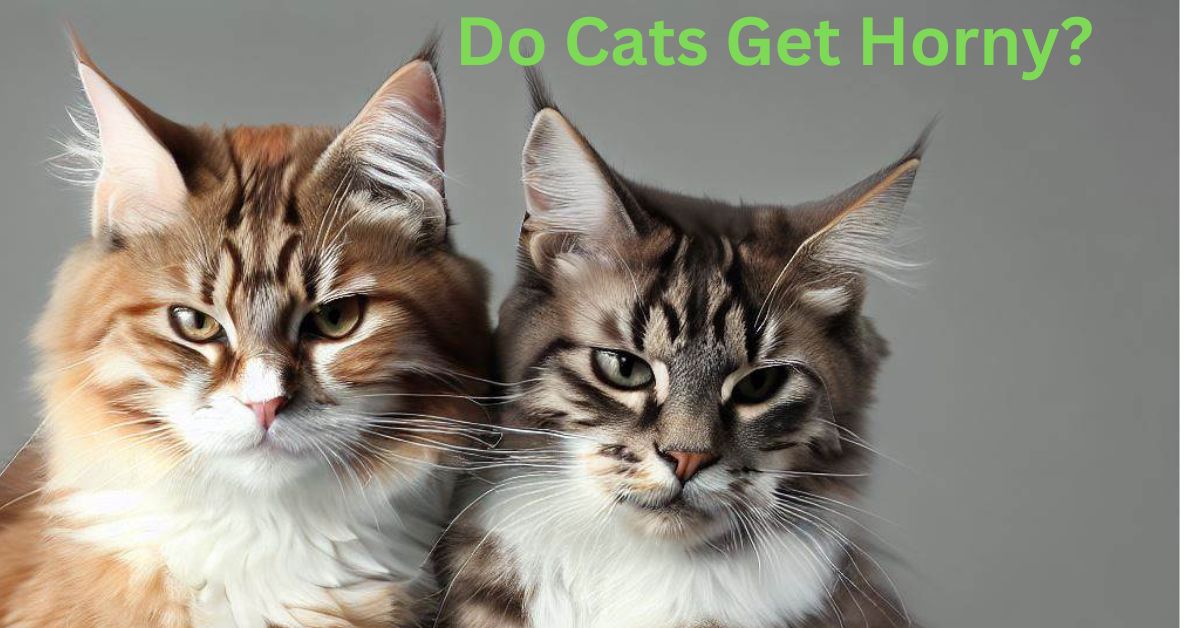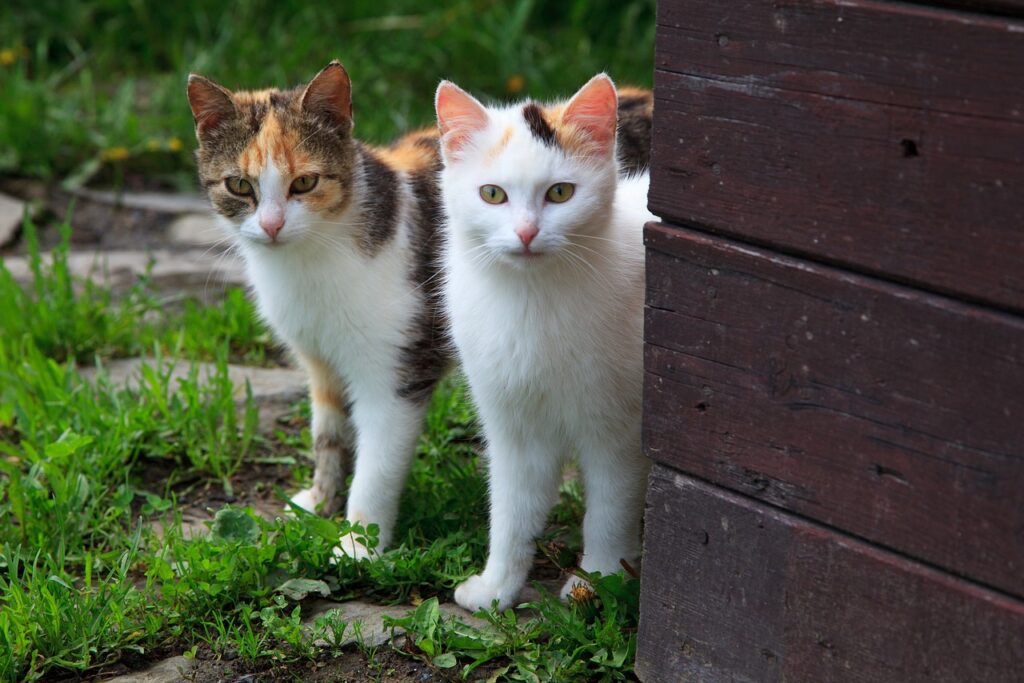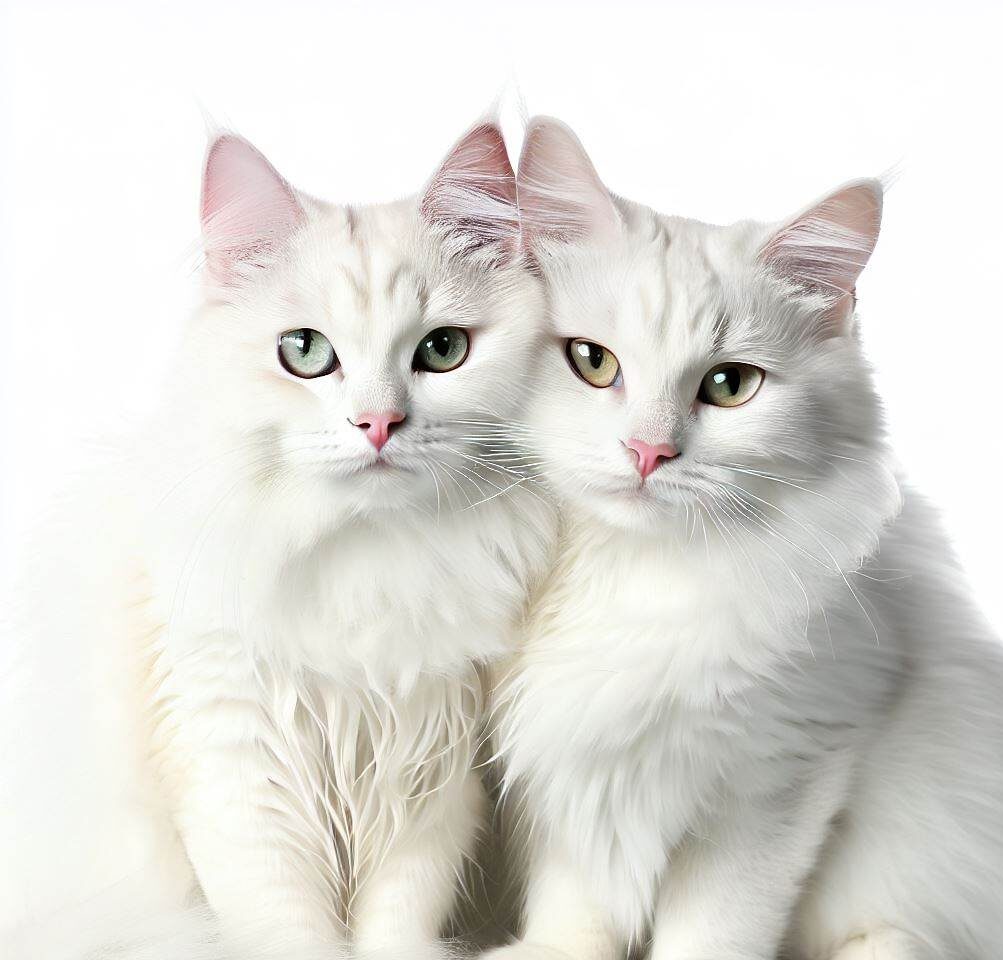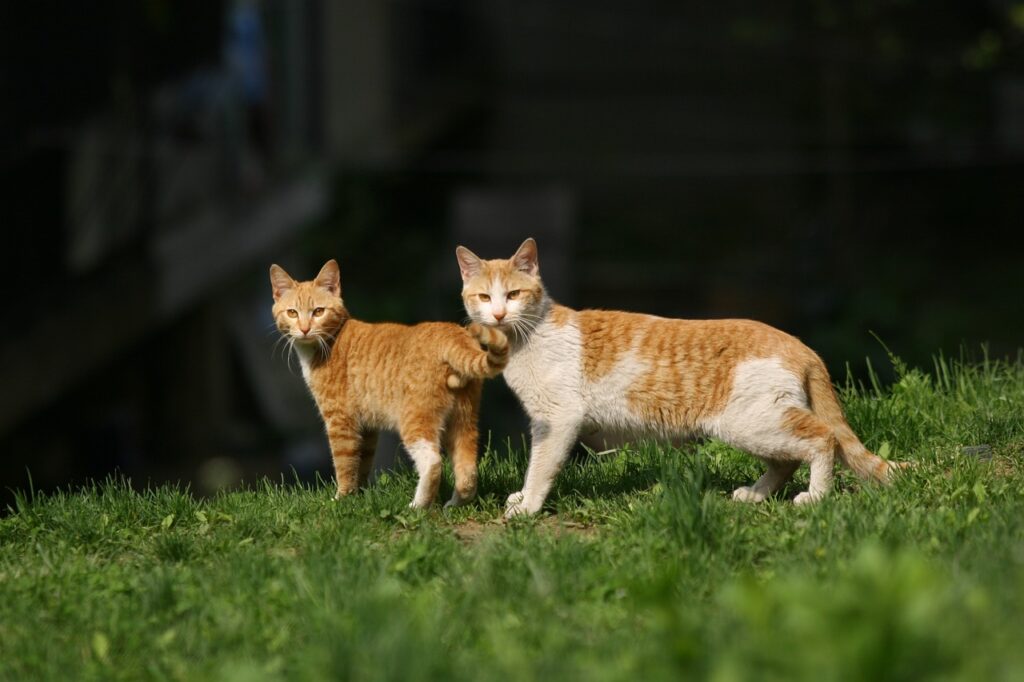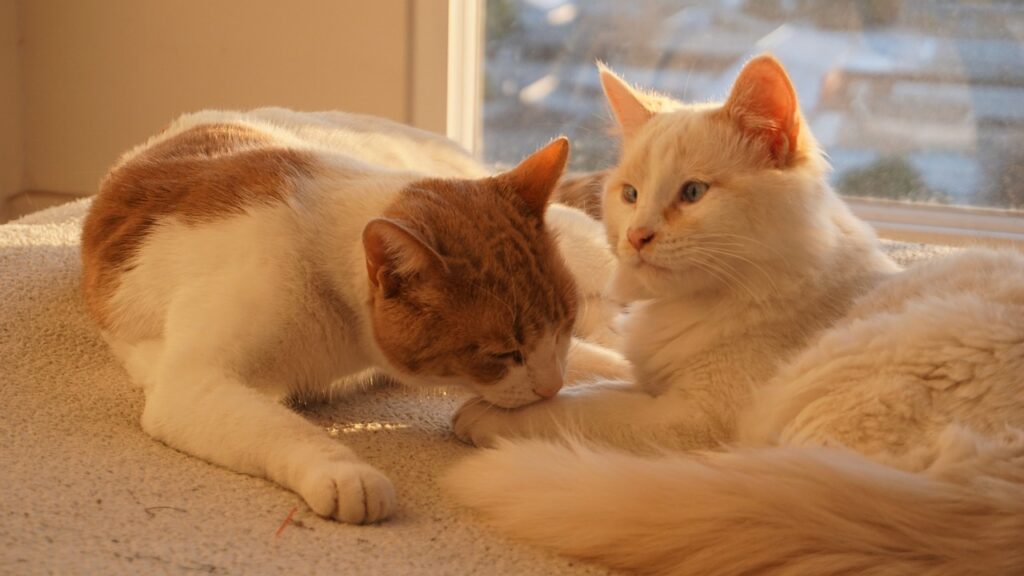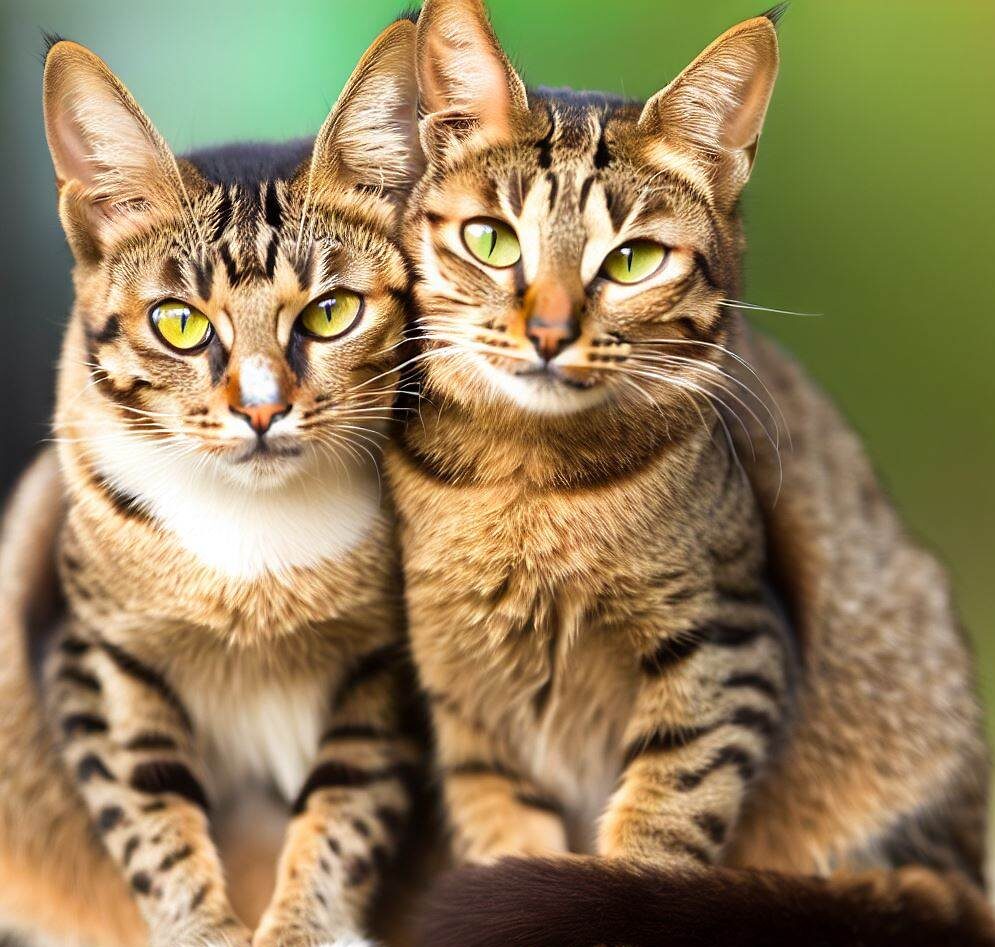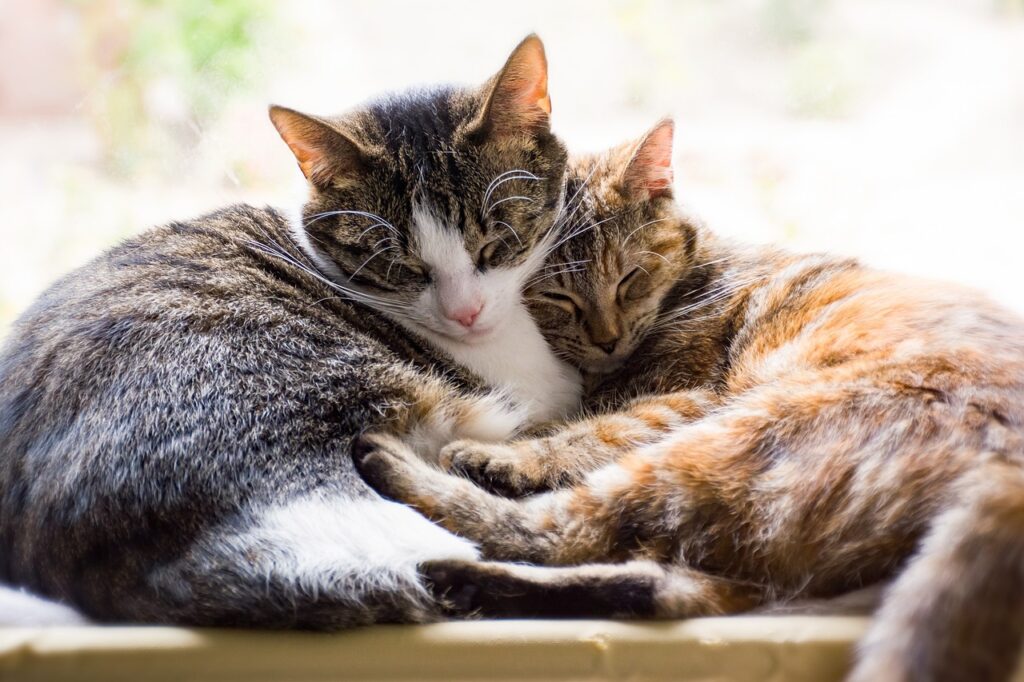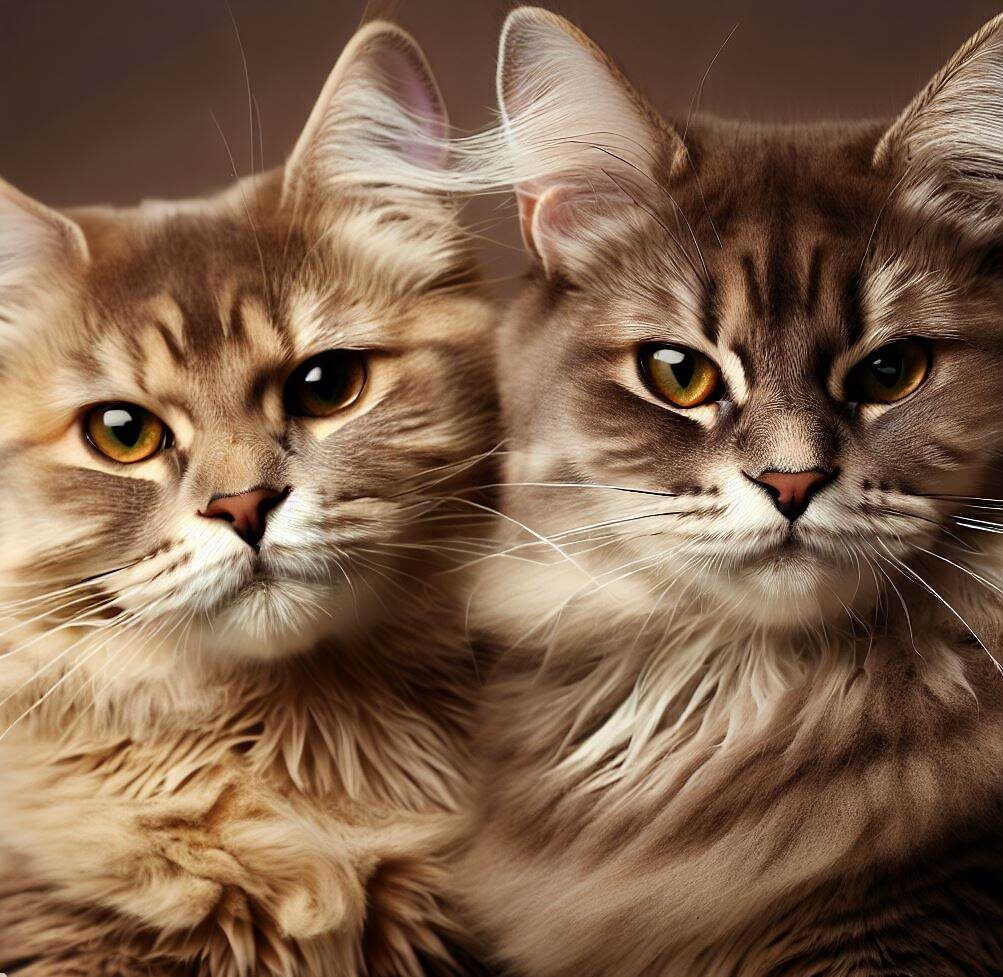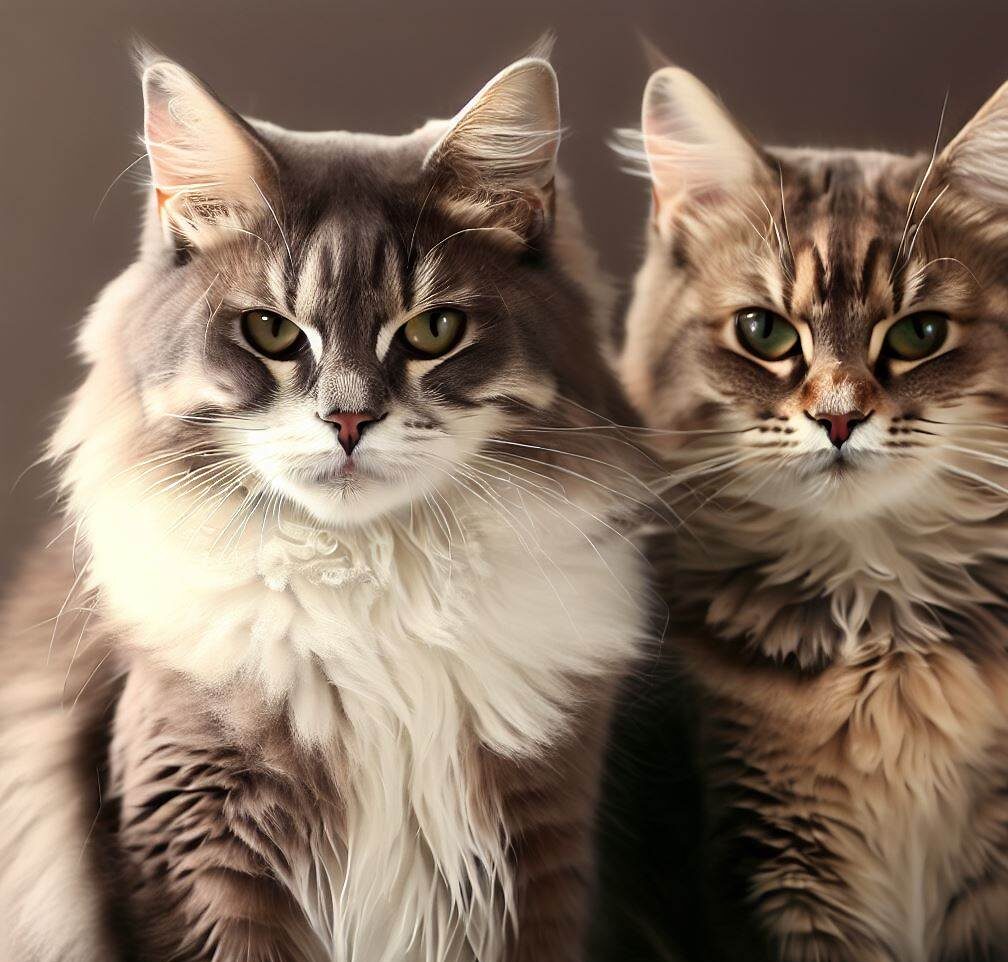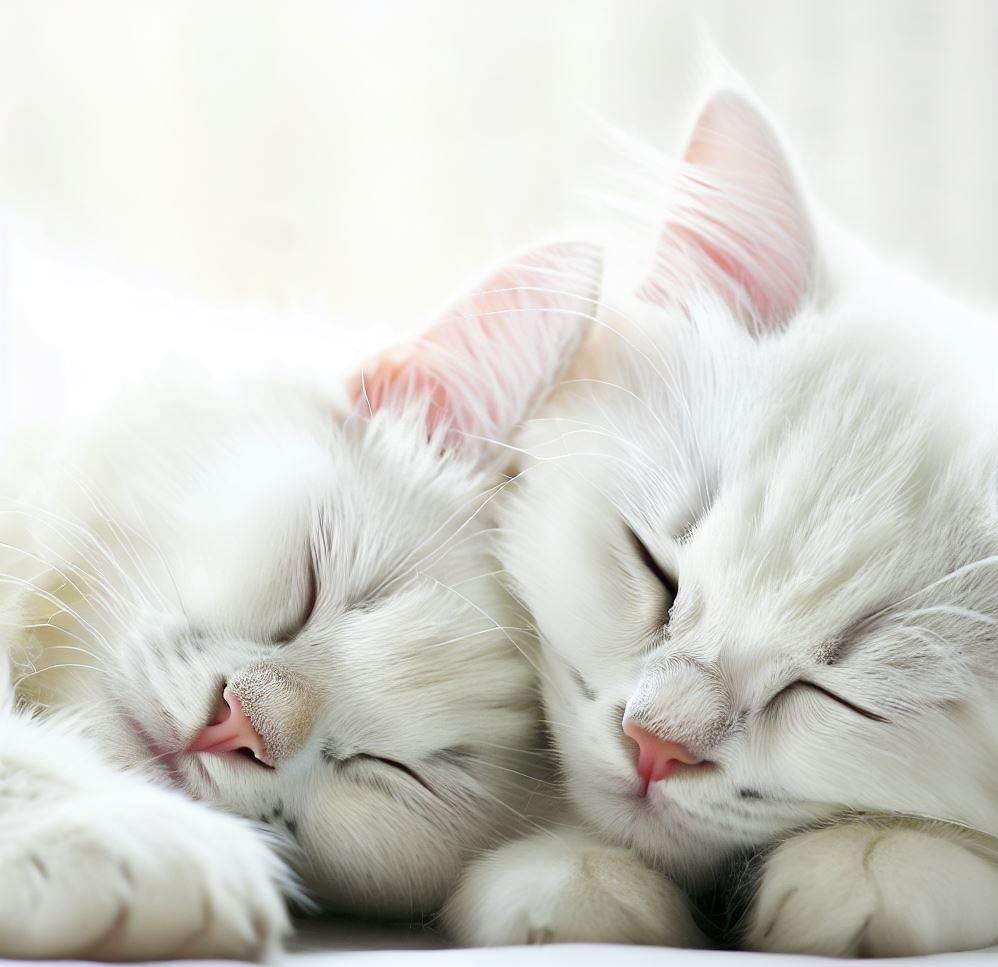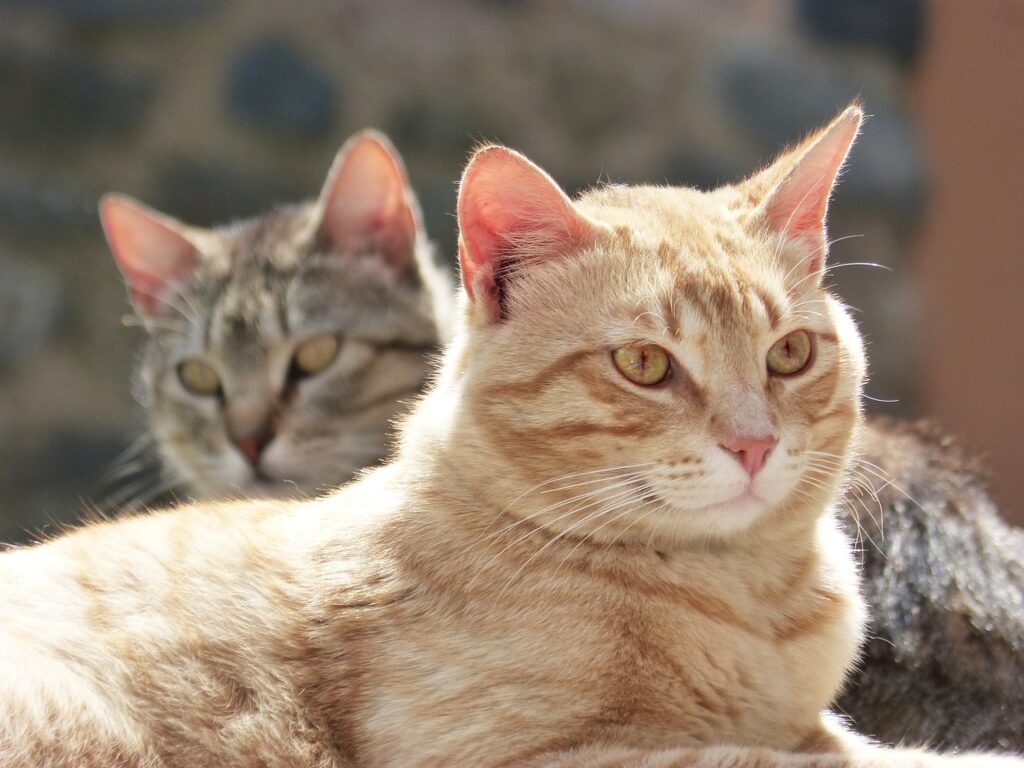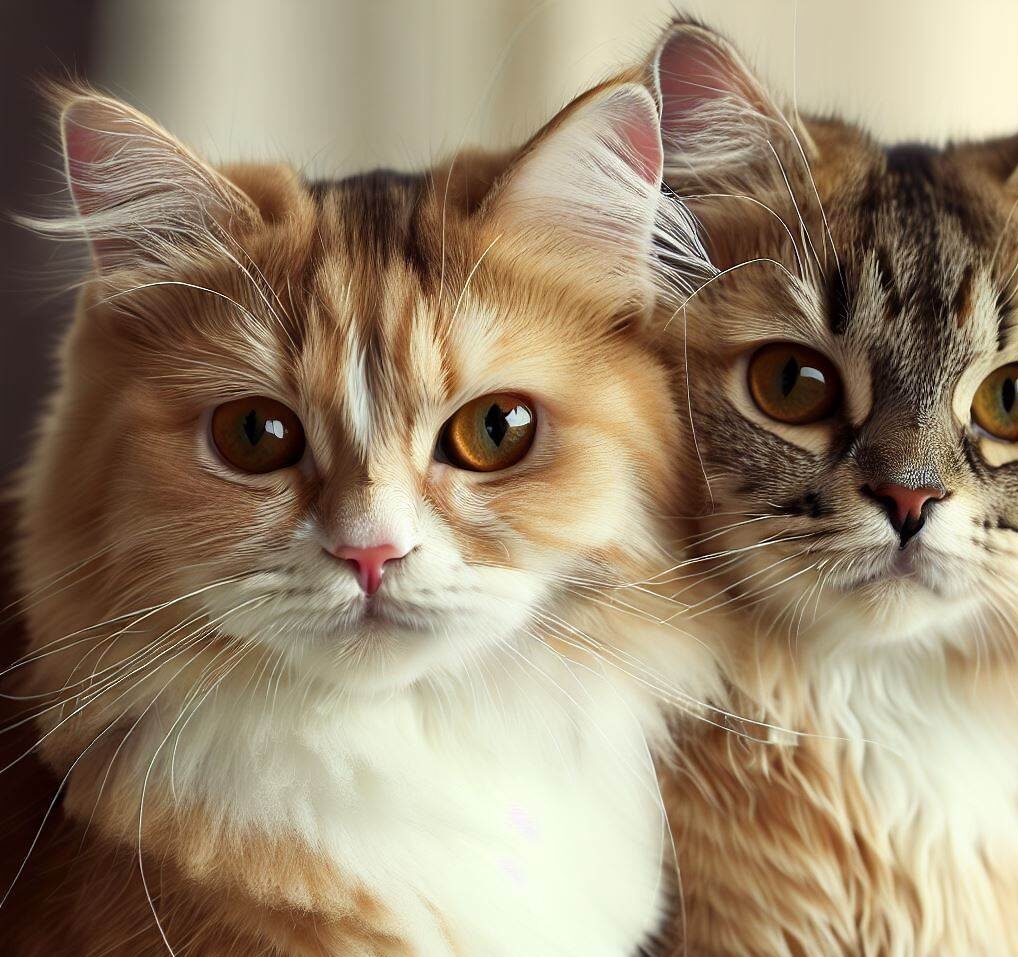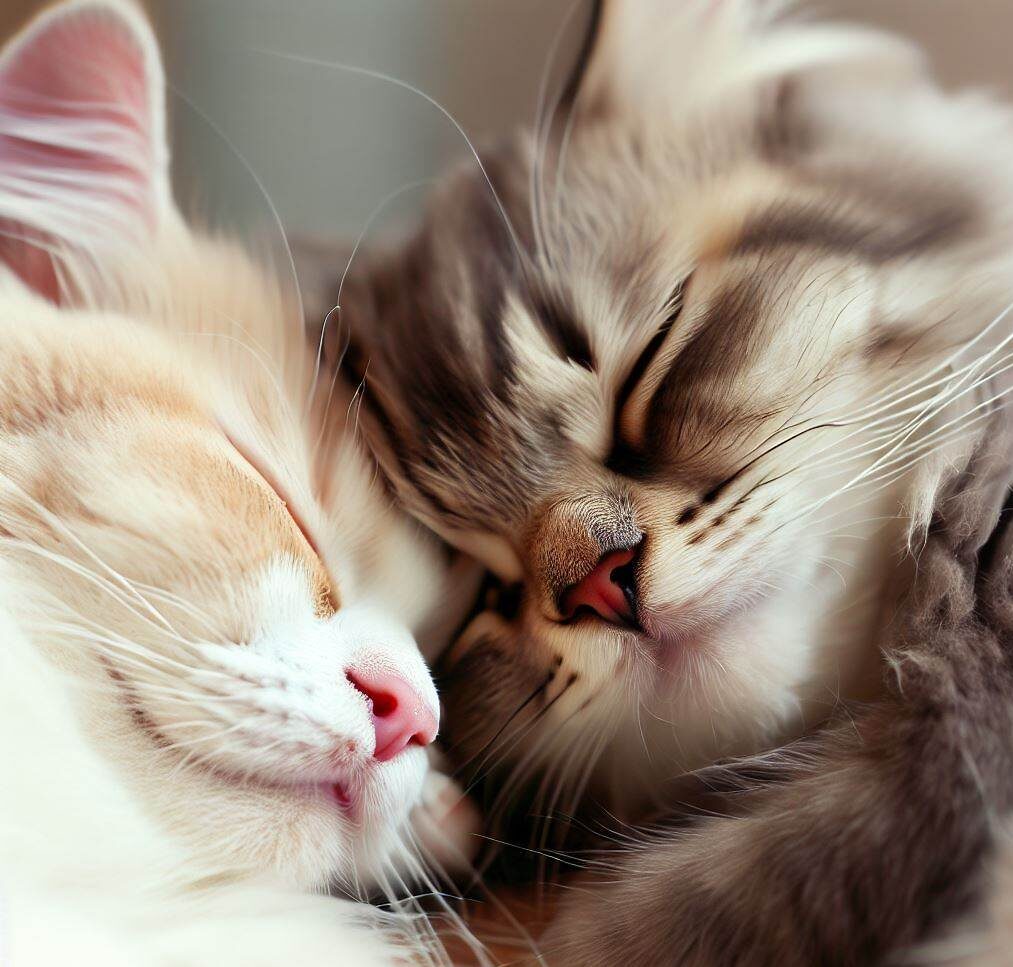Introduction
Cats are fascinating animals, and many cat owners and enthusiasts wonder if cats experience a state of being “horny” or not. The question “Do cats get horny?” often comes up among cat owners who want to understand how their cat feels and behaves. In this article, we’ll find out what it means when a cat is “in heat,” which is a special time when they feel extra strong emotions. It’s like they have exciting feelings inside, and we’ll see how they behave during this time.
Understanding these instincts can help cat owners provide the best care and environment for their beloved pets. So, let’s delve into the intriguing world of feline reproduction and unravel the mysteries behind their hormonal cycles.
Do Cats Get Horny?
Imagine we’re talking about how cats feel and act when they want to have kittens. When we say “horny,” it means they have strong feelings inside them that make them want to find a partner and have babies.
Cats, like many other animals, have a period known as being “in heat.” During this time, female cats undergo various changes and behaviors signaling their readiness to mate and reproduce.
Signs Of A Cat In Heat
When a female cat is in heat, there are noticeable signs that indicate her reproductive cycle is active. Some of those signs are given below:
A. Increased Affection
Your usually aloof feline might suddenly turn into a love bug, constantly seeking your attention and yearning for cuddles.
B. Loud Vocalization
You might notice your cat meowing more frequently and louder than usual. This is her way of advertising her readiness to mate with male cats.
C. Excessive Grooming
Cats in heat tend to groom themselves excessively, especially around their genital area, as part of their natural mating preparation.
D. Elevated Tail
Your cat might raise her tail more often and may even show a peculiar “treading” movement with her hind legs when petted, a sign of receptiveness to mating.
E. Spraying
Female cats may spray strong-smelling urine to signal their mating readiness. This behavior, usually associated with male cats, can also occur in females in heat.
F. Increased Restlessness
Your cat may appear more active or restless, pacing around the house seemingly unable to settle, indicating her heightened state of arousal.
G. Attraction Towards Male Cats
If she’s around male cats, she might show more interest or even display aggressive behavior towards them, a clear sign of being in heat.
H. Increased Appetite
your cat might start eating more food than usual, which can be a side effect of hormonal changes.
I. Rubbing Against Objects
Cats in heat may exhibit increased rubbing behavior. This can involve rubbing against furniture, other pets, or even their human family members.
J. Attempt To Escape
An unspayed female cat in heat might try to escape to find a mate. She could become more inventive about finding ways to get outdoors.
K. Changes In Posture
Known as the “mating position” or “lordosis”, your cat may adopt a distinctive pose where she raises her hindquarters and lowers her front half, signaling readiness to mate.
Male Cat’s Behavior Towards Female In Heat
A. Strong Attraction
The male cat easily gets attracted to a female cat when she’s in heat. He can’t resist her smell and calls.
B. Feeling Restless
This attraction makes the male cat feel restless. He can’t relax and often makes noises. His calm behavior changes to one full of energy and restlessness.
C. Wanting To Win
If there are other male cats around, he sees them as rivals. He wants to be the only one for the female cat. This makes him act like a warrior, ready to compete with other males.
D. Not Giving Up
The male cat doesn’t give up easily. Even if there are problems or obstacles, he keeps trying to reach the female cat. His strong desire to mate makes him very determined and persistent.
The Cat Reproductive Cycle
Female cats go through something called a ”heat cycle” when they become capable of having babies. This usually happens when they are between 5 to 9 months old.
For most female cats, the heat cycles persist throughout their early years, usually until they are around 5 to 10 years old.
‘Heat’ usually happens a lot when the weather is warm, and the days are long. In these times, a female cat can go into ‘heat’ every two to three weeks. So, over a year, she could go into ‘heat’ about 15 to 20 times.
But things are different for cats that live inside the house. The lights in our homes can make these cats go into ‘heat’ at any time of the year. This is because the lights make them think the days are longer. This is how nature works for our feline friends.
If mating takes place during this period, fertilization can occur, leading to the possibility of kittens.
Mating Behaviors In Cats
A. The Start
When a female cat is ready to have kittens, she acts differently. She becomes very friendly and makes loud noises to attract a male cat.
B. Male Reaction
The male cat hears and smells her signals. He becomes louder, and more active, and might mark his area with his scent to show he’s ready.
C. The Meeting
Mating in cats involves a fascinating dance between the male and female. The male cat continues to court the female, trying to impress her and gain her approval. The female, in turn, plays an active role in the mating process, signaling her willingness to mate through specific behaviors.
D.After Mating
Once they mate, the female cat cleans herself. If she’s pregnant, she’ll have kittens in about nine weeks. This is how cats behave when they’re ready to have kittens.
Can Cats Experience Pleasure?
It’s hard to say if cats feel pleasure the same way we do. They act on their instincts and natural feelings to have babies.
For animals like cats, mating serves the purpose of procreation, ensuring the survival of their species.
Understanding Cat Attraction And Courtship
A. Heat Signals
When a female cat is ready to have kittens, her behavior changes. She becomes friendlier and makes a variety of sounds. These signals, both visual and auditory, serve as an invitation to male cats in the vicinity, indicating she is ready to mate.
B. Male Response
On sensing these signals, male cats react instinctively. They pick up the female’s scent and sounds, which causes them to become more active and louder. This is their way of responding to the female’s invitation.
C. The Dance
If a male cat encounters a female, they engage in a sort of dance. They show affection towards each other. This dance is their special way of communicating and courting before mating.
D. Mating
If the courtship dance is successful and they are compatible, they proceed to mate. The actual act of mating is quick, and it is usually accompanied by the female cat making loud noises.
This way of attracting and courting each other is a special part of how cats behave. It’s an interesting show of their instincts.
How To Calm Down A Horny Cat
A cat in heat may display behavior that can be challenging for both the cat and the owner.
Their sad cries and non-stop moving can make you feel for them, and you want to help your furry friend. Some of the ways to calm down your horny cat are given below:
A. Gentle Touch
When your cat is in a state of high hormonal activity, showing them love and attention through petting can offer comfort. This act of care can help calm them and assure them of your presence.
B. Quiet Environment
A quiet room, free from loud noises or disturbances, can help soothe your cat’s heightened senses. This serene atmosphere can help them feel less stressed and agitated.
C. Soft Lighting
Much like humans, cats can be sensitive to harsh lighting. Creating an environment with soft, gentle lights can provide a peaceful atmosphere, reducing their anxiety.
D. Soothing Sounds
Playing calming sounds or gentle music can have a soothing effect on your cat. The gentle notes can create a relaxing atmosphere and help ease their restlessness.
E. Calming sprays
There are specially designed calming sprays with scents that cats find relaxing. These can be used to create a calming environment that helps to soothe your cat’s heightened instincts.
F. Regular Play
Engaging your cat in their favorite games and activities can distract them from their hormonal urges. The physical exertion will also help them use up their excess energy, which might otherwise contribute to their restlessness.
G. Favorite Toys
Providing their favorite toys offers another means of distraction. The familiarity and engagement can divert their attention from their urge to mate, helping to soothe their restlessness.
H. Consult A Vet
If all these measures aren’t enough to calm your cat, consulting a vet may be necessary. They can provide expert advice on safe medications or procedures like spaying or neutering that can help manage these behaviors.
I. Regular Feeding
Keeping to their regular feeding schedule can offer comfort in routine. This can provide a sense of normalcy, helping to reduce their agitation.
J. Patience And Understanding
Remember, this behavior is a part of your cat’s natural cycle. Showing patience and understanding can go a long way during this trying time. It’s important to treat your cat with love and compassion, providing support as they navigate their hormonal changes.
Spaying And Neutering An Animal
Spaying and neutering are surgical procedures done by a vet to stop animals from having babies.
A. Spaying Is For Female Cats
The vet takes out the parts inside her that can make babies. This stops her from going into heat, which is when she wants to mate.
B. Neutering Is For Male Cats
The vet takes out the parts that let him make babies. This stops him from wanting to mate.
Importance Of Spaying And Neutering
Choosing to spay or neuter your pet is a big, but kind choice. It keeps them safe from unwanted babies and helps them stay healthy.
A. Stop Too Many Kittens
Lots of kittens are born each year and can’t find homes. Spaying and neutering help control this.
B. Keep Cats Healthy
Spaying and neutering can protect your cat from certain sicknesses. It can help female cats avoid problems with their womb and breast. For male cats, it can stop them from getting testicle cancer.
C. Avoid Bad Behavior
This can stop certain bad habits that can stress you and your cat, like marking their space with smelly pee or a female cat acting restless when she wants to mate.
D. Longer, Happier Lives
Cats that are spayed or neutered often live healthier and longer lives. It means more happy years with your pet.
By choosing to spay or neuter, you’re being kind and loving. It’s a responsible act that helps all cats.
Common Misconceptions
There are several myths and misconceptions surrounding feline reproduction. Some of the misconceptions are given below:
A. Cats Should Have One Litter Before Being Spayed
Many believe that a cat should have at least one litter before being spayed. This is a myth. There are no health benefits for a cat to have a litter before being spayed. Spaying can help prevent health issues like uterine infections and breast cancer.
B. Kittens Need To Reach Sexual Maturity Before Being Neutered
This is not true. Kittens can be safely spayed or neutered when they are as young as eight weeks old. The earlier the procedure, the quicker the recovery.
C. Cats In Heat Are Just Being Playful
Cats in heat are not just being playful or naughty. They are responding to a powerful natural urge. It’s not a behavior that can be trained out of them, and it’s important to respond with compassion and understanding.
D. Indoor Cats Do Not Need to Be Spayed Or Neutered
Even if your cat is indoors only, accidents can happen and they could get outside. Plus, spaying and neutering can prevent certain health issues and behavioral problems.
The Impact Of Environmental Factors
In the world of cats, nature and their surroundings influence their heat cycle. Warmer months mean more heat. Inside cats are affected by home lights, while outdoor cats follow other cats. Their feelings and health also matter. Age and past experiences play a part too, showing us how important it is to care for them with love.
Feline Reproduction In Multi-Cat Households
Managing multiple cats during the breeding season requires careful planning and consideration. Implementing strategies to prevent unplanned pregnancies can ensure a harmonious household.
In homes with many cats, feline reproduction creates a beautiful connection among the furry family. The cats’ emotions and instincts lead them to sync their mating behaviors, showing their deep bonds.
Taking care of multiple females during their heat cycles can be challenging but loving. Neutering the male cats helps keep peace and love in the house by preventing unwanted behaviors.
Responsible pet ownership means getting all cats spayed or neutered. This ensures a happy and healthy home for everyone.
As new kittens are born, the house becomes a sanctuary of love and care. Creating safe spaces for cats during these times shows them our compassion.
In this heartwarming symphony of life, we play a crucial role. Our love and care make our multi-cat household a place of joy and harmony. Our furry family members bring us closer, filling our hearts with boundless affection and enriching our lives in ways only they can.
Responsible Breeding Practices
Responsible breeding practices are all about showing deep love and care for our beloved cats.
A. Kind Selection
Good breeders pick their cats carefully. They choose healthy and well-behaved cats to be parents.
B. Health And Happiness
At every step, the cats’ well-being is a top priority. From before breeding to after the kittens are born, they get lots of love and care.
C. Finding Loving Homes
The goal is to find forever homes for the kittens. They want each kitten to have a family that will love them forever.
D. Preventing Too Many Cats
Responsible breeders don’t make too many litters. They want all the cats to be happy and have lots of love and care.
E. Always Learning
Good breeders keep learning about how to care for cats.
F. Talking Openly
Breeders talk honestly with people who want to adopt a kitten. They share helpful information about the breed and how to take care of the cat.
G. Support for Life
Good breeders are there to help even after the cat goes to their new home. They care about the cat’s whole life.
With responsible breeding, the melody is all about love and responsibility. It’s a heartfelt commitment to cherish our cats and make sure they have a happy life.
Conclusion
In conclusion, cats indeed exhibit reproductive behaviors, and the term “horny” can be associated with their instinctual urge to mate. Understanding these behaviors helps us provide better care for our feline friends and contributes to responsible pet ownership.
Frequently Asked Questions
Is it normal for cats to meow more during certain times?
Definitely! When cats are feeling amorous, they might let out some extra meows to get attention or announce their availability to potential mates. It's their unique way of expressing desire.
Why does my male cat follow my female cat around so much?
Aww, that's his way of showing interest. The male cat easily gets attracted to a female cat when she's in heat. He can't resist her smell and calls.
Do cats experience heartbreak or sadness if they can’t find a mate?
Cats might feel a bit frustrated if they can't find a suitable partner, but rest assured, they bounce back! Cats are resilient beings, and with your love and care, they'll be just fine.
Is it true that cats have a mating season?
Absolutely! Female cats typically experience a mating season during the spring and summer when the days are longer.
Should I be worried if my cat is not interested in mating?
Not at all! Just like humans, not every cat feels the same way about romance. Some cats might be more independent and less interested in mating, and that's perfectly okay.
Can cats get spayed or neutered to prevent mating?
Yes, they can! Spaying and neutering are essential to prevent unwanted pregnancies and reduce hormonal urges. It's a responsible way to help control the cat population and keep your furball happy and healthy.
How long does a cat’s “horny” phase last?
For female cats, it typically lasts about a week, but they might cycle back into it if they don't mate. Male cats, on the other hand, are always ready for love.
Are there any health risks for cats during their mating period?
There can be some risks associated with mating, like accidental injuries during aggressive behaviors or potential infections. That's why spaying and neutering are highly recommended.
Should I keep my cat indoors during its mating season?
Keeping your cat indoors during their mating season is a wise decision. It ensures their safety and prevents them from getting into potential mating-related troubles outdoors.
Can mating behavior change in older cats?
Absolutely! Just like us, as cats age, their behaviors and desires might change. Some older cats may become less interested in mating, while others may remain just as playful and affectionate.
